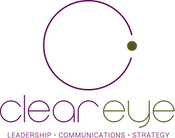
“This perception that there’s not a pool of suitably qualified women has been around for years, and it is not something that I accept.”
Gender diversity at board level
How to get women into the boardroom
The latest batch of figures on gender diversity in Irish boardrooms paints a very disappointing picture.
More than a quarter of boards have fewer than 10 per cent female membership, according to an Institute of Directors in Ireland report.
There’s a gap between thoughts and actions too. Almost nine out of ten directors said gender diversity was important when recruiting new board members. Yet, two thirds of directors had fewer than 30 per cent female representation on their board.
It is even more interesting to consider why those surveyed think that is. Women blamed it on “unconscious bias”, while men said it was due to the limited pool of suitably qualified women.
Maura Quinn, chief executive of the Institute of Directors in Ireland, couldn’t disagree more with the men’s view: “This perception that there’s not a pool of suitably qualified women has been around for years, and it is not something that I accept.”
Board-ready
Across Europe, women are fighting back against this bias too.
Earlier this year, European Women on Boards, a non-profit organisation that aims to boost female board representation, unveiled ‘Talent Pool’, an online network of high-qualified women ready to join a company board.
The project has the backing of a number of high-profile women, including managing director of the International Monetary Fund, Christine Lagarde. For her, it’s simple: more women on boards helps women achieve their full potential and also, according to IMF research, boosts a company’s financial performance.
Ireland has had a similar initiative in place since 2010. It was set up by Vivienne Jupp, chair of CIE and a former senior Accenture executive, and her former Accenture colleague Anne-Marie Taylor. Their initiative, Board Diversity Ireland, produces a directory of women willing and qualified to serve on boards. The fourth edition, published in January, includes 109 women who are board-ready.
Getting a seat at the table
Ireland is not the only country struggling to balance its boardrooms. A 2016 report by the Credit Suisse Research Institute, Credit Suisse’s in-house think tank, found that women occupy just under 15 per cent of board seats globally.
So what must women do to get a seat at the board table? In a recent Broadly Speaking podcast Ellvena Graham, a veteran of the banking industry and the current chair of the ESB’s board, encouraged women to “actively seek out opportunities”.
A good first step, she said, was networking and meeting as many people as possible.
For those with board aspirations, advice and experience are useful things to seek out, too. On the first, the Irish chapter of the 30% Club, another organisation striving for more diverse boards, runs a mentoring scheme to help women at all stages of their career to reach their full potential.
Also, Boardmatch Ireland matches not-for-profit boards looking for expertise with professionals seeking a board position.
Public vs. private
Interestingly, when it comes to gender diversity, private-sector boards in Ireland are playing catch up. Guidelines for Irish state boards set targets of 40 per cent female membership, with all vacancies now advertised on stateboards.ie.
Maura Quinn says: “Considering that we now have an open and transparent process of appointment to state boards which takes diversity into account, private-sector boards in Ireland would appear to be lagging behind.”
She sees quotas for female board representation as “a blunt tool”, preferring targets instead.
But gender is only part of the diversity question for boards.
Quinn sums it up well: “If you’ve got a board with essentially the same people, who went to the same schools, the same colleges, with the same professional qualifications, they are not going to challenge each other and bring a fresh perspective.”
